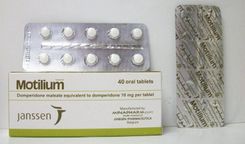Amoxicillin is an antibiotic that kills certain types of bacteria that cause infections and is ineffective against viruses. So, in what cases is the drug used, what are its effects, and how is it dosed?
1. Composition and Uses of Amoxicillin
Amoxicillin is a penicillin-type antibiotic that kills certain types of bacteria that cause infections. Therefore, Amoxicillin is used to treat infections caused by these bacteria. Doctors may also prescribe Amoxicillin to prevent some infections if you are at risk of developing them. The drug is ineffective against viral diseases (e.g., colds or the flu).
Moreover, bacteria are constantly adapting to the effects of antibiotics, causing many once-effective antibiotics to become ineffective (antibiotic resistance). Therefore, the decision of whether or not to use antibiotics and which antibiotic to choose should be made by a doctor after a thorough examination and evaluation. Self-medication using old prescriptions or prescriptions for other patients with similar symptoms should be avoided.
2. Contraindications of Amoxicillin
The drug should not be used in patients who have had a severe allergic reaction to Amoxicillin or any component of the drug.
Since the drug is primarily excreted by the kidneys, caution should be exercised in patients with impaired renal function. In some cases, it may be necessary to adjust the dosage or increase the dosing interval to avoid drug accumulation and toxicity.

3. Dosage and Administration of Amoxicillin
The dosage of Amoxicillin depends on various factors (patient's age, weight, drug formulation, renal function, and severity of infection).
Generally, the usual adult dose is 500 mg - 1000 mg every 2-3 hours. For children, the dosage is usually calculated based on weight. For mild to moderate infections, the dose is 25-50 mg/kg/day divided into 2-3 doses. In some cases of severe infections, the dose may be increased to 80-100 mg/kg/day.
For patients with decreased renal function, the dosage of Amoxicillin may be reduced or certain formulations may not be used.
Amoxicillin can be taken with or without food. Extended-release tablets should be taken within one hour after a meal. Taking the medication with food may reduce gastrointestinal side effects (nausea, vomiting). It is recommended to space doses evenly (e.g., every 8 hours if taken 3 times a day or every 12 hours if taken 2 times a day) for optimal antibacterial effect.

Depending on the formulation, the method of administration may vary. For example, suspensions usually require shaking before use and should be taken within a certain period after reconstitution. Extended-release tablets should be swallowed whole and not chewed, broken, or crushed.
Liquid formulations require an accurate measuring device and should only be used for a specified period after reconstitution. Refer to the package insert or consult a pharmacist for the correct use of each formulation.
4. Precautions when using Amoxicillin
In general, Amoxicillin has few side effects. Common side effects include nausea, vomiting, and diarrhea. These side effects are usually mild and self-limiting. However, if side effects persist, especially severe diarrhea, multiple times a day, or bloody diarrhea, you should notify your doctor.
Some patients may experience severe allergic reactions to Amoxicillin, so if you notice any signs of allergy (such as itching, rash, swelling of the eyes, mouth, difficulty breathing), you should stop taking the medication and see a doctor for diagnosis and timely treatment.
Inform your doctor about any other medications you are taking, including herbal products and dietary supplements.
Do not stop taking the medication when symptoms improve. You should take the full course of treatment as prescribed. This helps prevent the infection from returning and reduces the risk of drug resistance in future uses. If symptoms do not improve while taking the medication, you should consult your doctor.
If you miss a dose, take it as soon as you remember. If it is near the time of the next dose, skip the missed dose and take the next dose as scheduled. Do not double the dose to make up for a missed dose.

Although there is currently no evidence that Amoxicillin is harmful to children, always inform your doctor before taking any medication if you are pregnant, planning to become pregnant, or breastfeeding.
To arrange an appointment, please call HOTLINE or make your reservation directly HERE. You may also download the MyVinmec app to schedule appointments faster and manage your reservations more conveniently.













